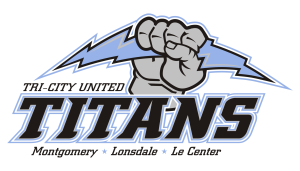Activity Types - A Brief Introduction
This book covers a four commonly used activities you'll find in your course.
2. Activity - Lesson
The Lesson activity in Moodle is a structured, step-by-step activity that's typically built around presenting content to your learners, and prompting them to respond to checks for understanding along the way. Though the Lesson can present content to learners in a linear path, you can also add branching paths based on the choices your learners make. These branching paths make Lesson an excellent option for scenario-based activities where you're using a "choose your own adventure" style of decision making. You navigated through a Lesson in the Your Course Structure activity earlier in this course.
For example: Prompting the learners to select the first step of removing PPE when exiting a lab environment. If the learners make the correct choice (removing your gloves), they're taken to a page telling them they were correct, and prompting them to select the next piece of PPE to remove. If they make the incorrect choice, they can be taken to a different page explaining how not removing their gloves contaminated the rest of their PPE, then looping them back to the first page of the Lesson.
A Lesson in Moodle can be as simple or complex as you wish. We recommend starting simple for your first few Lessons. The tips below should help:
- The Lesson activity allows you to build both content and questions within one activity in your course. Spend time pre-planning the pacing for this activity, including spots where questions would be appropriate.
- Plan out your lesson before it. This way you know what type of content, checks for understanding, or question pages you want to include, which will save you time during the creation process.
- As a tip: We recommend planning out the major sections and questions of your Lesson using Post-it notes and a flat surface near you (using one Post-it per page or question).
- Like the Quiz activity, Lesson has two steps to its creation.In the first step you'll create the environment for the Lesson. A better way to think of this first step is to imagine you're explaining how the Lesson should work to someone who's going to deliver it on your behalf.
- For example: When should the Lesson be available? Should the learners see a progress indicator bar? Are learners allowed to retry a question they answered incorrectly?
- In the second step you'll add your content and questions. We've broken down each step of this process in the next Book in this course: More About the Lesson Activity.
- Clusters are an advanced feature in the Lesson activity since they offer your learners a random pool of questions you've added. They may be too intense to incorporate into your first few attempts, but are worth a closer look once you feel comfortable building a Lesson.
- "Jumps" are how learners will transition from one page to another. "Continue" is an example of a jump description, as is "Next Page". Once you've given a jump a description, you'll indicate whether that jump takes the student to the next page, or to another place within the lesson.
- Content pages are where you include the meat of the lesson. Here you can incorporate videos, audio, images, and other media to your content.
- Question pages are where you can check for understanding. You can choose from matching, multiple choice, true/false, essay, numerical and short answer question types.
- Note: These questions are not in any way connected to quiz questions.
This page only provides an overview of the Lesson activity. For more in-depth directions on how to create one in your course, please review the next Book: More About the Lesson Activity
